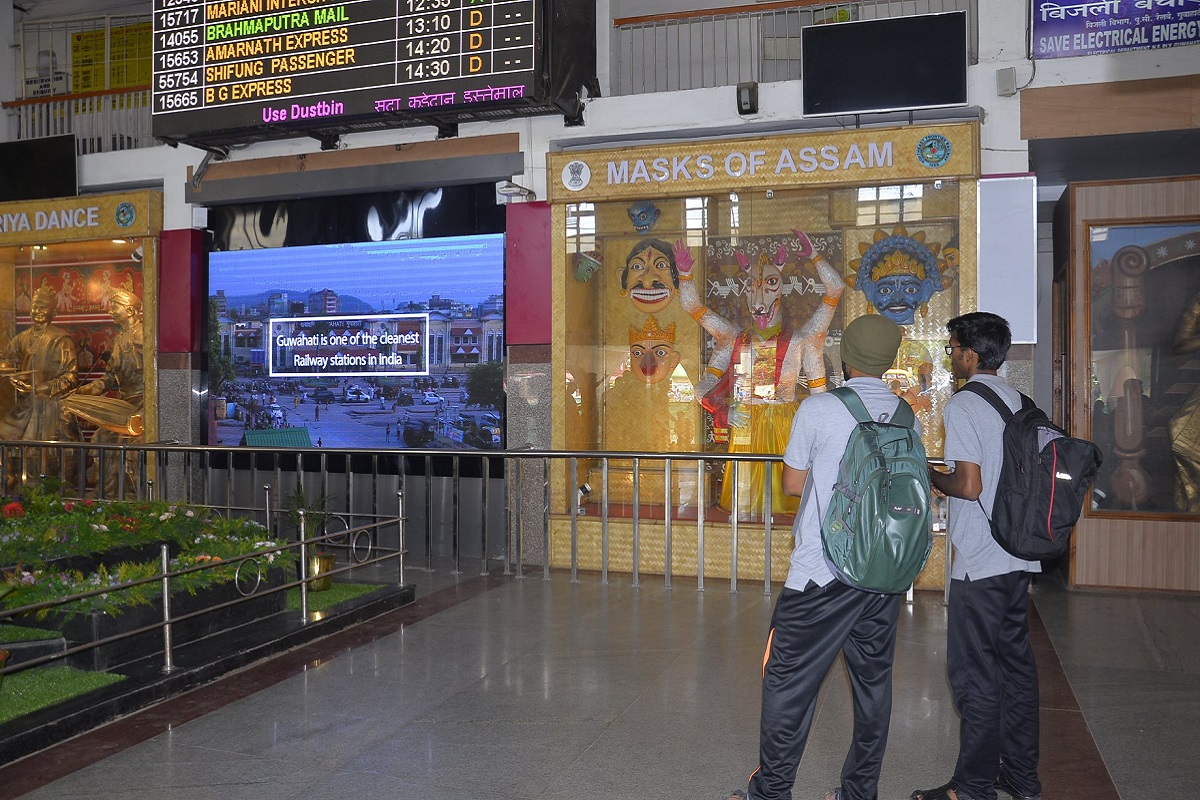Nagaland’s first ever railway tunnel was dug on 7 June at the outskirts of Chumukedima, about 15 km from Dimapur town.
The 82.3-km rail line from Dimapur to Kohima will run through Dhansiri-Dhansiripar-Shoxuvi-Molvom- Khaibong-Chephema-Khabvuma-Zubza at 900 m above sea level. The line will have 20 tunnels spanning 26 km besides 19 major bridges and is under the broad gauge railway project to be executed in three phases.
Officials of the North East Frontier Railway in Dimapur said that they are looking to run trains till Shoxuvi by December this year while the target is to complete all the three phases by 2022. This is a huge achievement — a breakthrough in this hilly and rough terrain, given that transport is a major hindrance for people in the North-east and it greatly impacts the economy and development of the region.
Railway connectivity is a major boost not only in terms of the economy but also social advancement. The absence of proper connectivity had isolated the region leading to no interaction even within the states let alone with people outside the region. Besides technical challenges, monsoon, which lasts for at least five to six months in a state like Nagaland, automatically halts the work.
Festivals, religious holidays and frequent shutdowns also add to the number of non-working days. Albeit at a snail’s pace, changes are taking shape in the North-east at large and Nagaland in particular. “The general public wants development,” said a NEFR official at the Chumukedima tunnel site, adding that there has been no major hindrance in the progress of the railway project.
As land is central to the lives of indigenous people in the North-east, acquisition of the same did cause a few hiccups with age-old community landholding systems. The Dimapur-Kohima rail line is part of the central government’s ambitious plan to connect all state capitals in the North-east with the railways. The Dimapur-Kohima project, with an estimated budget of Rs 500 crore, kicked off in 2016 with then Union minister for railways, Suresh Prabhu, laying the foundation stone.
Meanwhile, progress in terms of rail connectivity has been made in other North-east states too. In Manipur, a railway line between Jiribam and Imphal via Tupul is expected to be completed by 2019-20 and it would connect Imphal with the broad gauge network of the country. Reportedly, work is on in full swing. The project comprises a special bridge with 141 metre-high pillars, which would supposedly be the tallest in the world.
The Imphal-Jiribam line will roughly cover 110 km. The southernmost landlocked state of the North-east, Mizoram, saw a historic development as the first broad gauge freight train rolled into Bhairabi station — two km inside the state — in March 2016. With 10 stations, the 84-km rail line stretches between Katakhal (Assam) to Bhairabi (Mizoram) and covers Algapur, Hailakandi, Monacherra, Lalabazar, Mahamadpur, Katlicherra, Manipur Bagan, Jamira and Ramnathpur in between.
The project, with an estimated cost of Rs 326.51 crore, has 52 curves — the sharpest being seven degrees — besides 16 major and 161 minor bridges. Furthermore, another 51.38 km extension from Bhairabi to Sariang — 20 km inside Mizoram — is underway and expected to be functional soon. Reportedly, a survey has also been conducted for possible new routes from Sairang to Hmawngbuchhuah on the south, bordering Myanmar.
Earlier this year, Prime Minister Narendra Modi inaugurated the Garjee- Belonia railway line in Tripura. The 23.325 km railway line, which is located close to the India-Bangladesh border, passes through four out of eight districts of the state — West Tripura (Agartala), Sepahijala (Bishramganj), Gomati (Udaipur) and South Tripura (Belonia). The Naharlagun-Dekargaon railway line in Arunachal Pradesh was opened in April 2014.
Before that Arunachal Pradesh had only 1.26 km of railway line inside its border with the only station being Bhalukpong in East Kameng district. In line with the railway’s goal of providing connectivity to all state capitals of the Northeastern region, a survey was conducted in 1997 for a new line from Harmuti to Itanagar.
The massive railway links will foster connections between the Northeast states apart from connecting the region with “mainland” India. Besides the economic factor, it will also be a major boost for people-to-people contact as transport and movement will become more frequent, convenient and cheap. Moreover, efforts are being put into road construction with the four-lane Asian Highway comprising the Dimapur-Kohima-Imphal-Moreh road. As such massive constructions are taking off; it brings into the picture governance and administration of railways in the North-east. Daily commuters in the region would have witnessed the scene in stations — large crowds thronging trains once they halt on the platforms.
The worry is, in the North-east, passengers never bother to travel on a reserved or confirmed ticket. This happens even in air-conditioned coaches. For instance, the seating capacity of eight on a berth would have no less than 10 adults vying for space. Of them, only two or three would be travelling on a reserved ticket.
The general compartment is a sight to behold. Compartments are fully loaded and space is occupied from the aisles to the toilet doors. On the other hand, platforms have no functioning signs to tell passengers where each coach will stand. Also, the compartments are full of waste. A child would do the cleaning job and get a small payment from some kind-hearted passengers. The condition of sanitation is another major concern with people running or hopping from one platform to another.
Vendors can be seen doing brisk business right on the tracks. With infrastructure slowly progressing under the NEFR, it is hoped that the administration, monitoring of passengers and functioning of trains in the North-east would eventually become more efficient. Hopefully, train stations will also have a facelift with better services, functioning escalators and good quality catering services.
(The writer is a freelance journalist based in Imphal and Dimapur)











